Nestled in the northwest heartland of China, a city embraced by the Yellow River stands as both a historic chokepoint of the ancient Silk Road and a modern jewel along the Belt and Road Initiative. Here, the aroma of beef noodles permeates streets and alleys as early as 6:00 AM; the bells of Baita Mountain resonate with the Yellow River’s waves; and the Reader magazine has accompanied generations through their youth – this is Lanzhou, Gansu Province. Let us traverse its landscapes on foot and trace its history through our taste buds, embarking on an immersive journey through the soul of this city.
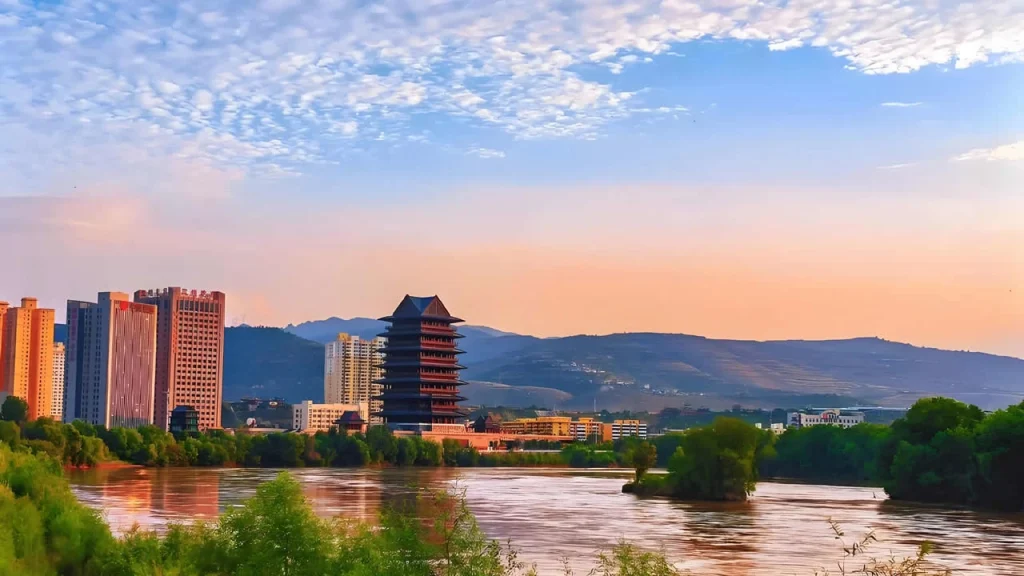
I. A Brief City History: From “Golden City” to Modern Metropolis
Lanzhou, known as “Jincheng” (Golden City) in ancient times, symbolizes “unassailable strength.” In 121 BCE, during General Huo Qubing’s western campaign against the Xiongnu, a fortress was erected here, and Emperor Wu of the Han Dynasty established Jincheng County—marking the beginning of Lanzhou’s 2,000-year urban history. As a strategic frontier outpost for Central Plain dynasties managing the Western Regions, Lanzhou bore witness to pivotal events: Zhang Qian’s diplomatic journeys, Xuanzang’s quest for Buddhist scriptures, and Princess Wencheng’s marriage to Tibet. During the Ming and Qing dynasties, it became the seat of the Shaan-Gan Governor-General, where Zuo Zongtang launched Westernization initiatives, planting “Zuo’s Willows” that painted the Loess Plateau with emerald hues.
Today, Lanzhou serves as Gansu’s capital, a pivotal industrial base, and comprehensive transportation hub in northwest China. The Lanzhou-Xinjiang and Baotou-Lanzhou railways converge here, while Lanzhou Zhongchuan International Airport acts as an “aerial Silk Road,” forging global connections for this inland city. Along the Yellow River, modern skyscrapers contrast with century-old iron bridges, harmonizing the literary legacy of the Reader magazine’s headquarters with the dynamic pulse of a tech-driven metropolis.
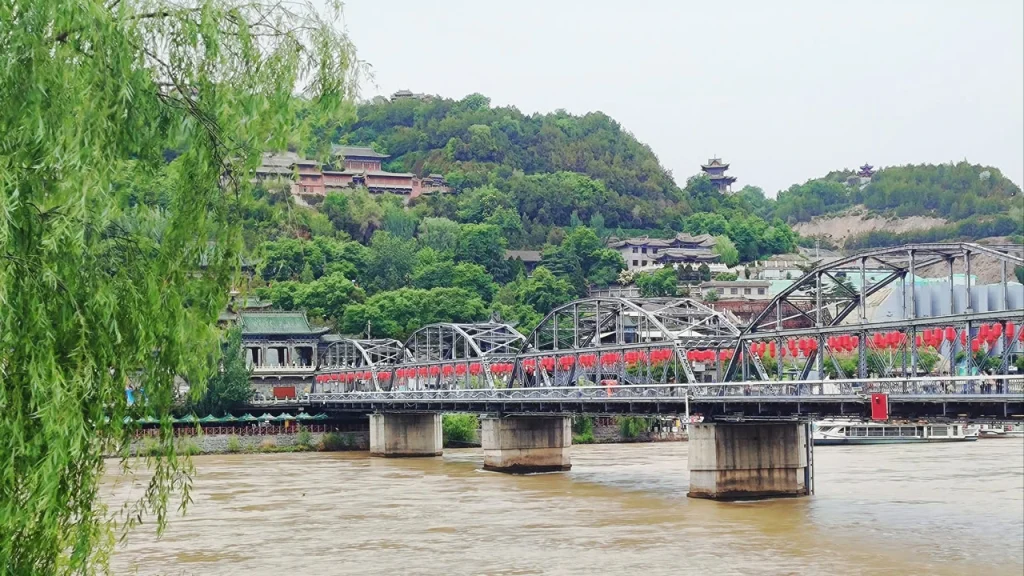
II. Geographic Significance: A Silk Road Crossroads Between Two Mountains and One River
Nestled at the transition between the Loess Plateau and Qinghai-Tibet Plateau, Lanzhou is bisected by the Yellow River flowing west to east, dividing the city into northern and southern banks. To the south rises Gaolan Mountain, while to the north stands Baita Mountain, creating a unique landscape of “two mountains sandwiching one river.” This geography imbues Lanzhou with three defining traits:
A Three-Dimensional Tapestry of the “Yellow River Capital”
The Yellow River’s gentle current through Lanzhou has nurtured landmarks such as the Zhongshan Bridge (“First Bridge Over Heaven’s River”), the Waterwheel Expo Park, and the Mother of the Yellow River sculpture. Visitors can drift on sheepskin rafts, experiencing the millennium-old craft of “crossing the river on inflated hides,” or ascend Santai Pavilion to gaze upon the “Yellow River’s meandering embrace around the city.”
Climatic Code: Warm Winters, Cool Summers, and Four Distinct Seasons
Lanzhou enjoys a temperate continental climate with an annual average temperature of 11.2°C (23°C in summer). While winters bring cold, indoor heating ensures comfort. Each season offers unique charms: pear blossoms in spring, roses in summer, Yellow River carp in autumn, and steaming hot pots in winter—making Lanzhou a year-round destination.
Transportation Hub: From Ancient Tea-Horse Road to Modern High-Speed Rail
In antiquity, caravans exchanged silk and tea here; today, the Lanzhou-Xinjiang High-Speed Rail slashes travel time between Urumqi and Lanzhou to 11 hours, while Lanzhou New Area emerges as a new gateway for opening westward.
III. Lanzhou on the Tip of the Tongue: The Alchemy of “Clear, White, Red, and Green”
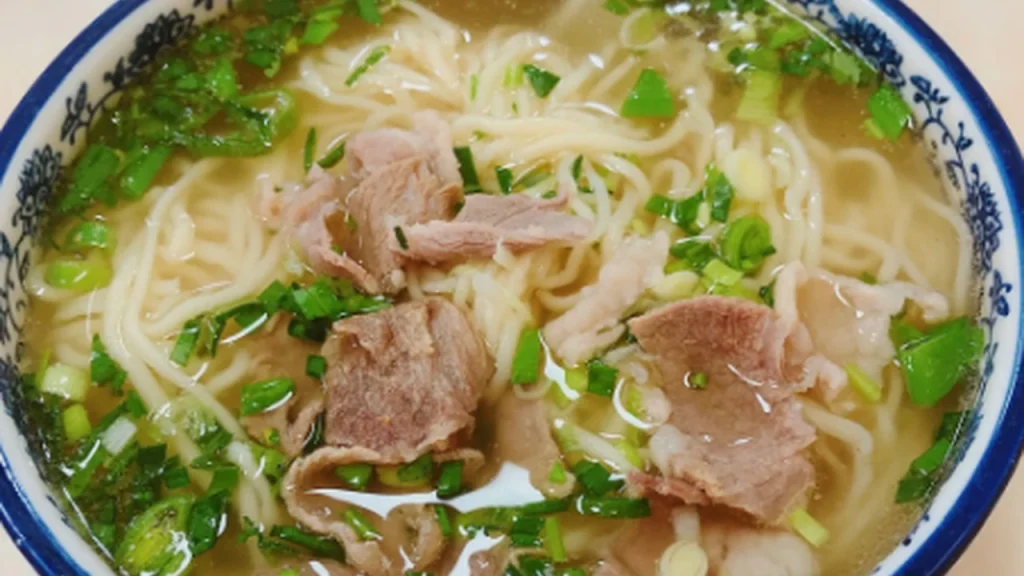
Lanzhou’s day begins with a bowl of beef noodles—but the culinary treasures of this land extend far beyond this iconic dish.
- Lanzhou Beef Noodles: China’s “Number One Noodle”
The philosophy of Lanzhou life is distilled in this bowl, honored by the China Cuisine Association as one of “China’s Top Three Fast Foods.” Its four elements are captured in the rhyme:
Clear (broth), white (radish), red (chili oil), green (coriander and garlic sprouts), and golden-yellow (noodles).
Noodle Artistry:
The thickness of the noodles defines the texture—a secret code shared between connoisseurs and cooks:
Maoxi (thinnest hair-like strands), Xidi (thin), Sanxi (slightly thicker), Erxi (thicker), Jiuye (leek-leaf width), Dakuan (wide belt-like).
Regulars order with precision: “Erxi, extra chili!”
Broth Mastery:
Six hours of simmering beef bones, free-range chickens, and 23 spices yield a clear yet robust broth—pristine until the last sip, with no sediment.
Iconic Shops:
Mazilu, Mayoubu, and Wumule Penghui draw lines before dawn, though locals swear by hidden gems like “Ga Xiaofu Noodle Shop” tucked in residential lanes.
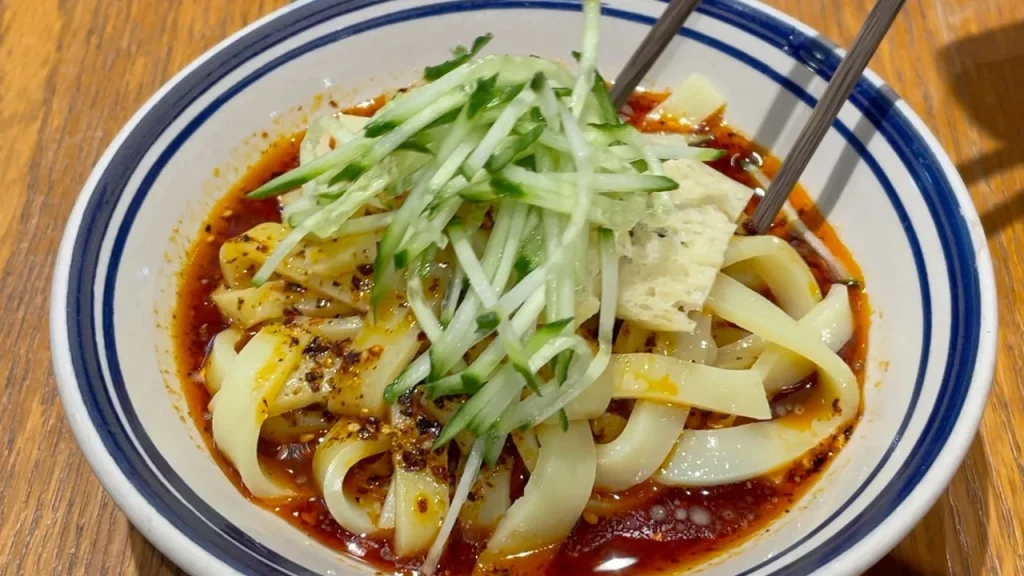
- Night Market Chronicles: The Culinary Spectacle of Zhengning Road and Nanguan
As dusk falls, Lanzhou’s soul ignites in its night markets—a symphony of sizzling woks, clinking bowls, and lively banter.
- Milk Egg Glutinous Rice Wine (牛奶鸡蛋醪糟):
Grandpa Ma’s copper cauldron bubbles with a creamy broth, into which he cracks fresh eggs, sprinkles sesame seeds, and tosses raisins. The result? A sweet yet uncloying elixir that once graced A Bite of China. - Steamed Cold Rice Noodles (酿皮子):
Alkaline rice batter is steamed into translucent sheets, then doused in chili oil, vinegar, and minced garlic—a tangy, chewy delight that electrifies the taste buds. - Sweet Fermented Grains (甜醅子):
Lightly fermented highland barley or oats, served chilled with grilled skewers. This “life-giving dessert” offers a subtly boozy kick to power through Lanzhou’s nights. - Gray Pea Soup (灰豆子):
Mung peas and jujubes simmered with penghui (edible potassium carbonate) until velvety. The result: a sweet, sandy-textured soup with an earthy alkaline finish.
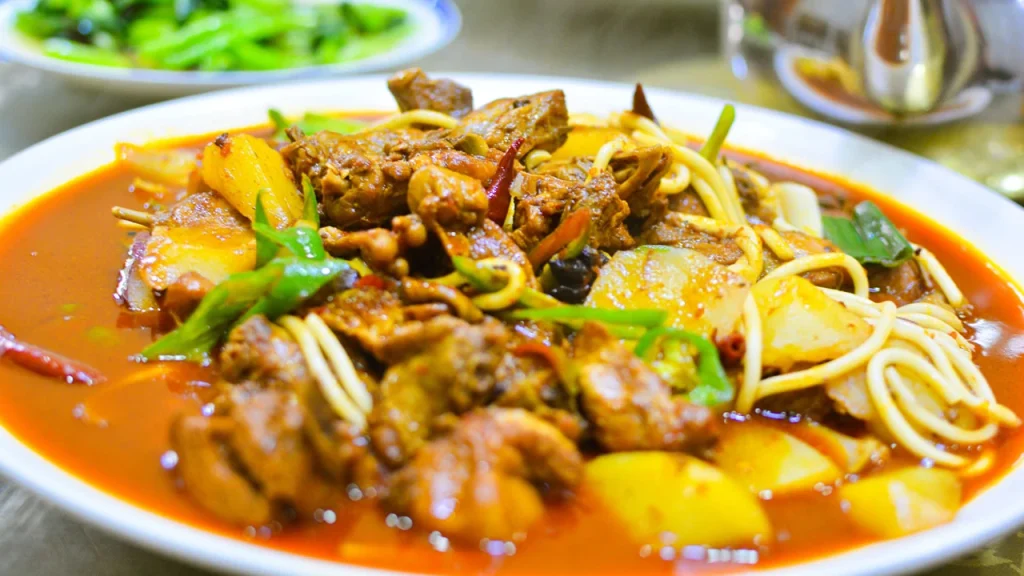
- Bold Flavors: Yellow River Carp & Hand-Grabbed Mutton
- Yellow River Carp:
Simmered in the river’s own waters, the carp emerges tender and earthy-free, paired with Lanzhou’s prized lilies—a crisp, sweet counterpoint that cuts through richness. - Jingyuan Lamb:
Six-month-old lamb is stir-fried to tender perfection with onions and vermicelli, yielding a dish both aromatic and addictive. The meat—tender yet springy—carries none of the gaminess that turns diners away, only a pure, savory essence.
IV. Must-Visit Attractions: From History’s Current to the Cosmos
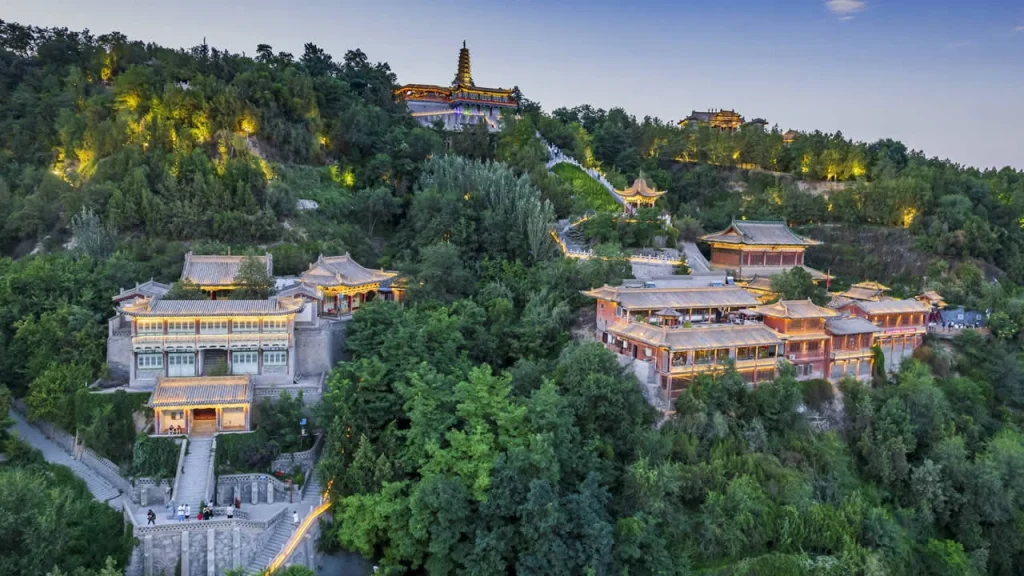
- Yellow River Scenic Byway: The City’s Living Room
- Zhongshan Bridge:
Dubbed the “First Bridge Over the Yellow River,” this 115-year-old icon—designed by German engineers and fully steel-riveted—sparkles by night like a “golden sash adorning the Golden City.” - Baita Mountain Park:
Ascend for panoramic vistas of Lanzhou, then wander the mid-mountain Lanzhou Stele Forest, where masterpieces of calligraphy from various dynasties etch China’s literary legacy into stone. - Waterwheel Expo Park:
A tribute to Lanzhou’s heritage as the “Capital of Waterwheels,” this park showcases colossal 16-meter-wide wooden wheels that creak and rotate, their rhythmic groans echoing the Yellow River’s ancient ballads.
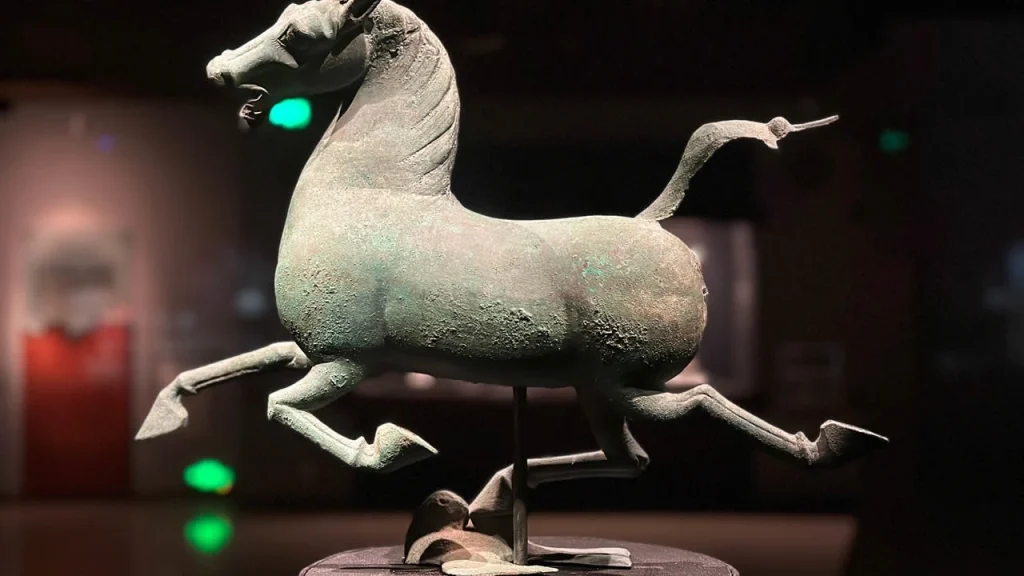
- Gansu Provincial Museum: The Star Attraction “Bronze Galloping Horse Treading on a Flying Swallow”
- Bronze Galloping Horse:
This Eastern Han Dynasty bronze artifact, unearthed in Wuwei in 1969, depicts a stallion neighing with three hooves off the ground and one foot treading on a flying swallow—a testament to ancient artisans’ mastery of dynamic equilibrium. China’s national tourism logo, it symbolizes both artistic grandeur and scientific ingenuity. - Courier Mural Brick:
A Wei-Jin period mural brick portrays a postman galloping with a credential, earning it the moniker “Emblem of China’s Postal Service.” The scene freezes a moment of Silk Road communication in pigment and clay. - Dunhuang Sutra Cave Exhibition:
Though original manuscripts now reside in Beijing, reconstructed caves and murals here evoke the splendor of Silk Road civilizations. Frescoes of Bodhisattvas and flying apsaras whisper tales of Buddhist transmission along the ancient trade route.
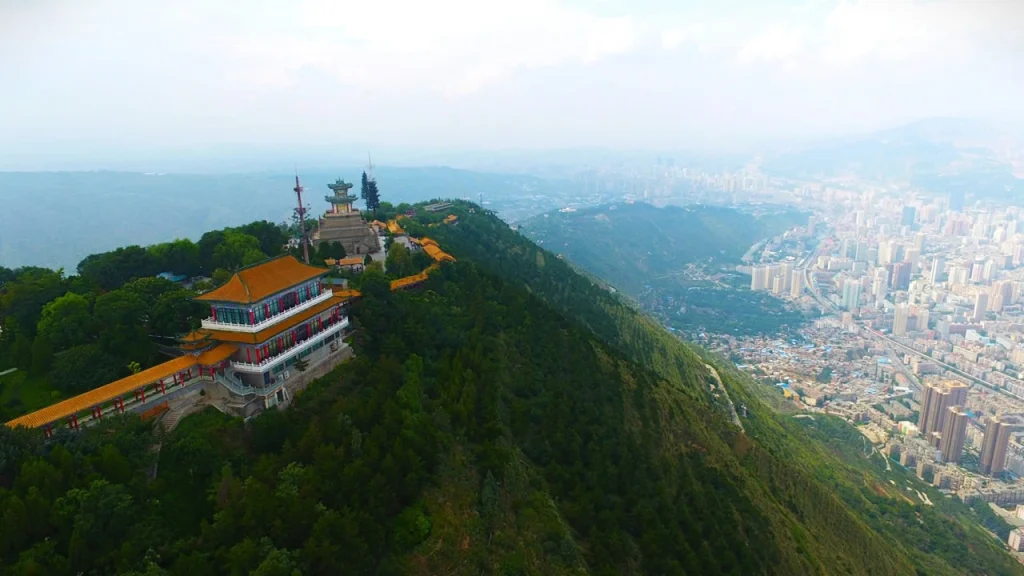
- Lanshan Park: Stellar Camp Atop the City
- Santai Pavilion Viewing Platform:
Perched at 1,800 meters, this vantage point offers a breathtaking panorama of Lanzhou by night—the Yellow River winding through the city like a silk ribbon, while a sea of lights illuminates thousands of homes below. - Stellar Camp:
On summer weekends, youths haul tents, beer, and guitars to camp on the mountaintop, where laughter and strummed chords mingle under star-strewn skies. They await the Milky Way’s rise, a celestial spectacle that transforms the horizon into a luminous river of its own.
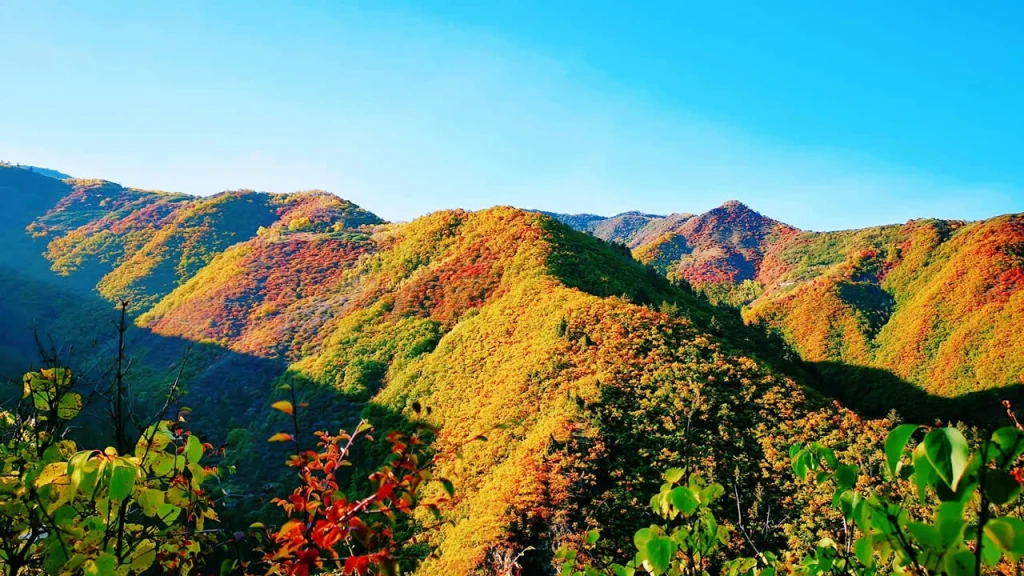
- Xinglong Mountain: Longyou’s Premier Peak
- Natural Wonders:
Situated 45 kilometers from downtown Lanzhou, this mountain boasts 80% forest coverage, painting a vivid tableau across seasons: flaming autumn foliage ignites the hillsides, while glistening winter rime transforms branches into crystal sculptures. - Cultural Heritage:
The mountain once temporarily housed the funerary bier of Genghis Khan, adding a layer of historical gravitas. Amidst its slopes lie ancient Taoist temples, where incense smoke curls through time-weathered halls, and silence reigns except for the whisper of pine winds.
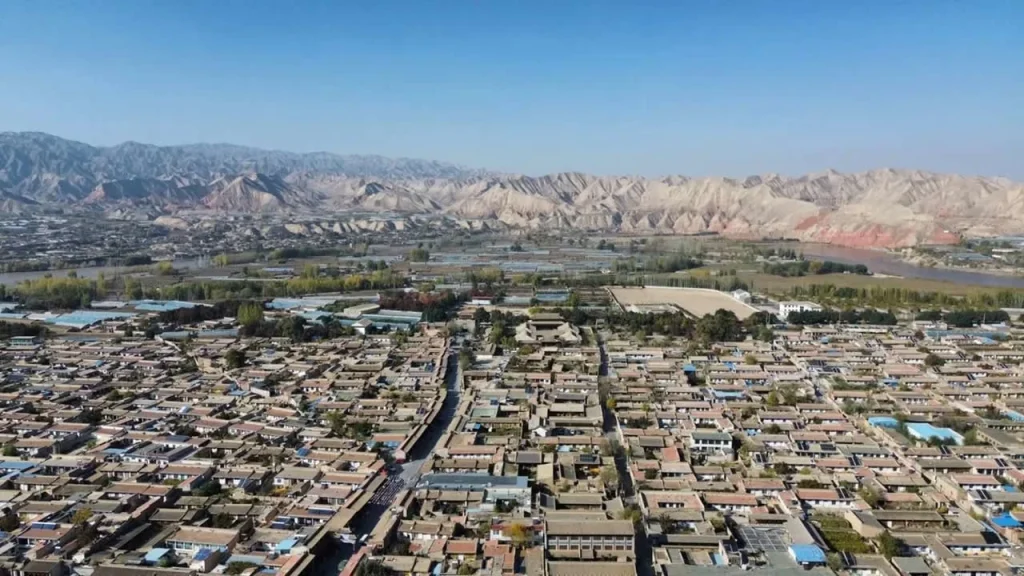
- Qingcheng Ancient Town: “Gansu’s Jiangnan” on the Yellow River’s Shore
- Water Pipe Tobacco Culture:
During the Ming and Qing dynasties, this riverside town thrived as a hub for water pipe tobacco production, with goods floating along the Yellow River to markets nationwide. Today, its time-honored workshops still craft tobacco using ancestral methods—a fragrant link to the Silk Road’s bygone prosperity. - Folk Customs Experience:
Spring Festival here erupts in a riot of Shehuo (village rituals featuring dragon dances and ancestral worship), towering stilts, and tiexinzi (iron-core puppetry), where children suspended on metal frames enact mythic tales. UNESCO has dubbed these traditions “living fossils of Yellow River folklore,” preserved intact for centuries.
V. Travel Tips: Living Like a Lanzhou Local
Best Seasons:
May-October offers the finest weather, with June’s roses and September’s plump Yellow River carp being seasonal highlights.
Getting Around:
- Metro Line 1 zips through downtown.
- The “Yellow River Scenic Route” bus loop connects major attractions—ideal for hop-on, hop-off exploration.
Dialect Immersion:
Master “Manfu” (contentment) and “Gansan” (efficiency)—two phrases that unlock instant camaraderie with locals.
Souvenirs to Savor:
- Kushui Roses: Distilled into essential oils or brewed as flower tea.
- Carved Gourds: Tiny masterpieces etched onto bottle gourds, a Lanzhou specialty.
- Lanzhou Lilies: Dried bulbs prized for their sweet, nourishing flavor.
Epilogue
Lanzhou is a city to be measured by footsteps and savored with every taste bud. Here, the Yellow River’s roar intertwines with the aroma of beef noodles; the camel bells of the ancient Silk Road resonate with the hum of high-speed trains. Stand on Zhongshan Bridge at dusk, watch the setting sun gild Baita Mountain, and see a sheepskin raft slice through the river’s surface—and perhaps you’ll grasp why Lanzhou’s allure lies not in instant grandeur, but in its resemblance to a bowl of niuroumian: ordinary at first glance, yet after savoring, you discern the depths of its millennium-old richness and warmth.

Leave a Reply